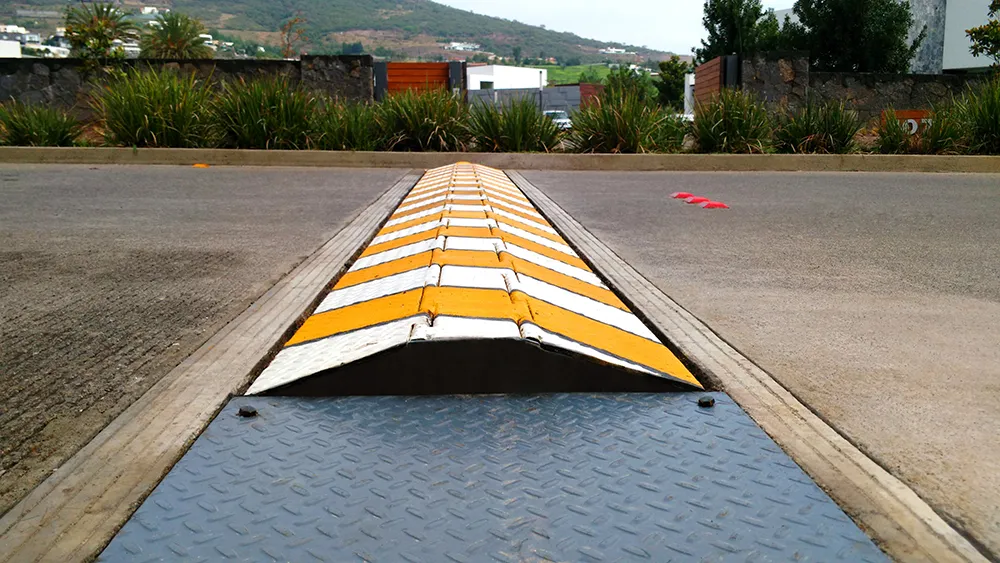New Zealand company ERoad is helping transport operators reduce speeds in high-risk areas with its new virtual speed camera.
Operators are now able to pinpoint areas of risk and apply their own speed limits to those areas for their drivers. They may be the same as the posted speed limit for the zone, or set lower to encourage extra vigilance around areas such as schools.
Operators are able to use virtual speed cameras to monitor the speed of any of their vehicles that have ERoad hardware devices inst
March 4, 2014
Read time: 2 mins
New Zealand company 7641 EROAD is helping transport operators reduce speeds in high-risk areas with its new virtual speed camera.
Operators are now able to pinpoint areas of risk and apply their own speed limits to those areas for their drivers. They may be the same as the posted speed limit for the zone, or set lower to encourage extra vigilance around areas such as schools.
Operators are able to use virtual speed cameras to monitor the speed of any of their vehicles that have EROAD hardware devices installed. Virtual speed cameras are created in EROAD’s web application by drawing geofences around areas where speed is to be monitor. Operators can then monitor speeds in those zones on any web-enabled device. If a driver exceeds a speed limit, a notification is immediately emailed to their company via EROAD’s web application. Operators can also opt to monitor speed over time rather than via notifications, with over speed reports generated by the web application.
EROAD customers have been quick to introduce a new level of vigilance around high-risk areas, recording an average speed reduction of nine per cent in the speed zones they have created since the virtual speed camera was released in December.
While variable speed limits have been set on roads outside many schools, they apply at certain times of day only, and can be difficult to enforce. Schools in rural areas and small towns are more at risk, with drivers having less time to reduce speed from open road limits.
Gradon Conroy, managing director of Designwindows in Hokitika, saw a problem with schoolchildren wandering onto the town’s roads, and decided to take action.
"For the first few days of using the virtual speed camera, I was receiving speed alerts for 52-53km/hour. That's now dropped, so the drivers are certainly slowing down and keeping to the speed limit,” Conroy says.
Operators are now able to pinpoint areas of risk and apply their own speed limits to those areas for their drivers. They may be the same as the posted speed limit for the zone, or set lower to encourage extra vigilance around areas such as schools.
Operators are able to use virtual speed cameras to monitor the speed of any of their vehicles that have EROAD hardware devices installed. Virtual speed cameras are created in EROAD’s web application by drawing geofences around areas where speed is to be monitor. Operators can then monitor speeds in those zones on any web-enabled device. If a driver exceeds a speed limit, a notification is immediately emailed to their company via EROAD’s web application. Operators can also opt to monitor speed over time rather than via notifications, with over speed reports generated by the web application.
EROAD customers have been quick to introduce a new level of vigilance around high-risk areas, recording an average speed reduction of nine per cent in the speed zones they have created since the virtual speed camera was released in December.
While variable speed limits have been set on roads outside many schools, they apply at certain times of day only, and can be difficult to enforce. Schools in rural areas and small towns are more at risk, with drivers having less time to reduce speed from open road limits.
Gradon Conroy, managing director of Designwindows in Hokitika, saw a problem with schoolchildren wandering onto the town’s roads, and decided to take action.
"For the first few days of using the virtual speed camera, I was receiving speed alerts for 52-53km/hour. That's now dropped, so the drivers are certainly slowing down and keeping to the speed limit,” Conroy says.








